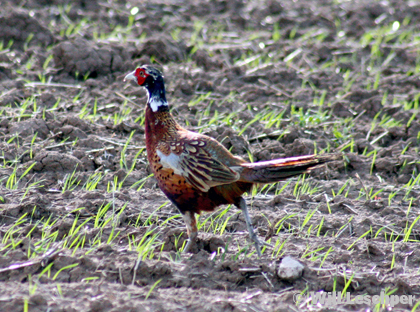Dressed to the nines and sporting a license to confound canines, the rooster pheasant is the James Bond of the outdoor world.
Just when you think you and your German shorthair know exactly where he’s cloaked, the old boy breaks from distant cover and throws out resonating cackles as he high-tails it toward the horizon. Then later, his spitting image scampers unseen to the edge of a field and the expectant blockers with their looming pump guns, only to skulk past and seemingly disappear into the morning glow.
The pheasant season in 37 Panhandle and Rolling Plains counties opens Saturday, and by all accounts it’s shaping up to be a good one. Like other birds, pheasants are dependent on moisture to carry out every cycle of their lives, and though it hasn’t been a superb year for rain as in other seasons, there should have been a good carryover of birds and a decent hatch in most places.
Though the Midwest often gets credit for being the top pheasant area, the Rolling Plains and Panhandle of Texas are tough to beat, and for good reason — the habitat is tailor-made for them. Pheasants love haunts that are a mix of vegetation, and the Panhandle and Rolling Plains offer a splendid variety of terrain in that regard. Permanent cover always should be the first place to walk out and land adjacent to grain fields that has been left in the Conservation Reserve Program offers some of the finest pheasant habitat you will ever find. Other areas that almost always hold birds are places such as tailwater pits, playa bottoms and stubble fields.
Even areas that may not look like good pheasant habitat may turn out to hold birds. Pheasants are notorious for being able to hide out in almost any type of cover and even the most meager-looking area could prove fruitful.
I remember hunting one year in Hansford County and walking along a fencerow situated between a green field and a switchgrass flat and thinking there wouldn’t be a bird anywhere near the open space. However, as I neared a small clump of bunchgrass at the edge of the green field, two roosters bolted from their hiding spot and about scared me to death.
It was nearly enough to not get a shot off … almost.
When it comes right down to it, there’s no way a bird with such ornate garb should be able to hide at all. But they do — and they do it well. Even though they’ve got a red and green head, a bright white ring around their neck, iridescent plumage and a striking tail, they are masters of hide and seek.
This precisely is what makes them such a fun bird to pursue.
The biggest grins I’ve seen on pheasant excursions aren’t when a group of hunters harvests its limit and calls it a day but rather when a bird bolts from out of nowhere and takes flight, escaping a volley of pellets and chortling the entire way as if he’s laughing. The other biggest gushing moments occur thanks to hunting dogs, especially when the pups are new to the game but use their training to roust birds that would just as soon run from prying eyes than rise skyward.
If you’re new to the pursuit, be careful — it’s addictive. But also take care and make sure you’ve got the essentials in your blaze orange vest, including eye and ear protection and a hunting license with an upland game bird endorsement to go with your No. 6 shells.
Though the vast majority of hunters will scour the countryside this weekend in search of their three pheasants a day, the season runs through the New Year, making it tempting to do a combo trip later this month, especially if you’ve got access to good waterfowl haunts and standing cover. Just remember to have a plug in your shotgun and avoid the lead if you move from targeting ringnecks to mallards or Canadas in the same day.
I must admit that laying in a goose or sandhill crane decoy spread and having the birds pile in is great. So too is having a number of different ducks light in to your setup just after dawn. But for my money, walking out a stubble field on a crisp winter morning hoping that even just one pheasant will materialize is as good as it gets.
If there’s one thing this hunter has learned from chasing after these transplanted birds from the Far East, it’s to expect the unexpected. With pheasants, you never know what might happen next.
I’ve even seen a dapper rooster swim across a stock pond in a daring and fruitful escape — minus the debonair theme music.
The best part is, I’ve got witnesses to back me up.




















